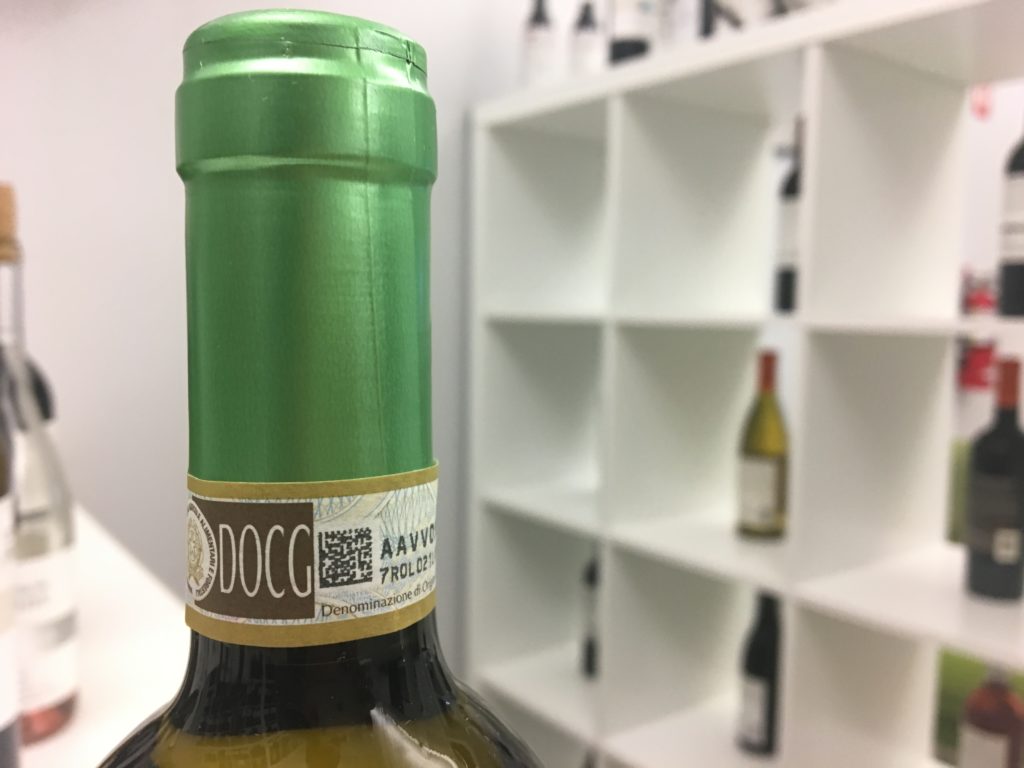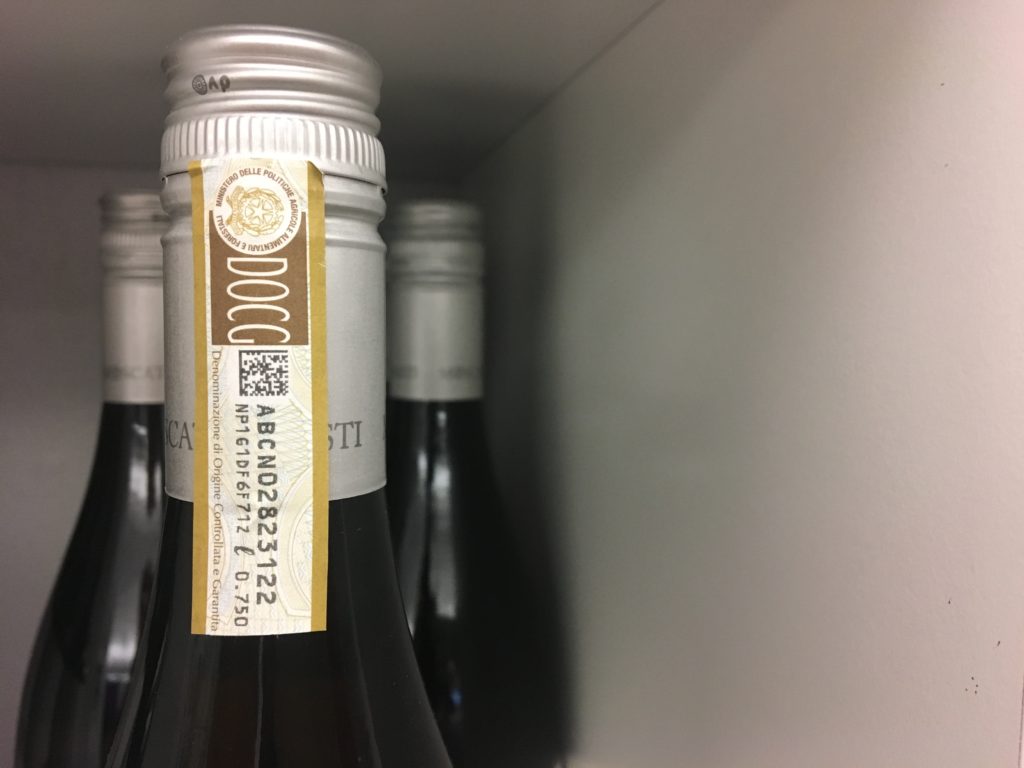European wine labels can be confusing if you don’t speak the language they are written in, furthermore they have all types of different classifications from one country to the next without consistent naming or labeling even existing within the same country itself, and to make things even more confusing, some regions and countries label by location while others label based on grape variety (the Alsace in France is a great example – the only area of France to label with the grapes name listed as opposed to the appellation of origin name). Really gets your head spinning, right?
In attempt to make your import wine isle life a little easier, and make better selections, we will look at the 4 types of classification for Italian wines that you will see listed on the labels or around the foils on the neck: DOC, DOCG, IGT, and VdT.
First off, where to find this info on an Italian bottle. Best place to look is at the top of the neck, either on or around the foil:


And if by chance that identifying band has fallen off, you can also find it on the label on the bottle as well, either on the front or back:

Now, what do they mean?
DOC (Denominazione di Origine Controllata): Literally translated, it is “Controlled Denomination of Origin”. More commonly found than DOCG wines, this designation is the answer to the French AOC, essentially guaranteeing a wine is from the place it states and it produced under strict guidelines to ensure quality and authenticity. As opposed to DOCG classifications, the DOC wines can usually be made from larger areas of designated growing land and incorporate more and/or different types of grapes in blends than the highly strict DOCG wines. There are 300+ DOCs in Italy.
DOCG (Denominazione di Origine Controllata e Garantita): Literally translated, it is “Controlled and Guaranteed Denomination of Origin”. A much more strict version of the DOC laws, usually putting caps on yields, and requiring a government committee to pass the wine itself via analysis, evaluation, and tasting. The installation of the DOCG class has helped to improve the quality of Italian wines in the market, and improve winemakers work. If you are a winemaker, there would be no reason to be in the handful of DOCG designated areas and not strive to make a DOCG certified wine. There are a little over 70 DOCGs in Italy.
IGT (Indicazione Geografica Tipica): Literally translated, it is “Typical Geographical Indication”. Created after the inception of the DOC and DOCG, IGT was established for winemakers who fell outside of the requirements of DOC and DOCG, but were still making notable wines by way of consistency and quality. This classification represents the wine being produced from a specific region.
VdT (Vino da Tavola): Literally “Table Wine”, is under very few rules and restrictions, and is essentially produced to be everyday drinking wine. Historically speaking, this classification allows producers to do all sorts of wild stuff and experiment. In Piemonte you would find producers blending Nebbiolo and Barbera, in Tuscany Sangiovese was blended with French grapes, and in some areas single varietals of French grapes were produced. In those times, a VdT could either be total garbage, or the most amazing wine for the price you could find. Unfortunately in modern times, VdTs fall more towards the garbage end of the spectrum, due to the creation of the IGT, where the better examples started to fall within the classification in combination with the laws now forbidding VdT from placing a vintage on the bottles.
Understanding Italy Series:

